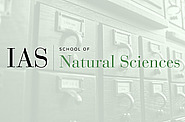Joint IAS Princeton University Astrophysics Colloquium
Dec
11
2018
Institute for Advanced Study/Princeton University Joint Astrophysics Colloquium
Machine Learning for the Universe: Steps Towards Opening the Blackbox
Shirley Ho
11:00am|Bloomberg Hall Lecture Hall
Dec
04
2018
Institute for Advanced Study/Princeton University Joint Astrophysics Colloquium
On the Origin of Life: Major hurdles on the path from organic chemistry to biochemistry
Andrei Lupas
11:00am|Bloomberg Hall Lecture Hall
Nov
27
2018
Institute for Advanced Study/Princeton University Joint Astrophysics Colloquium
Kinematics of Circumgalactic Gas
Crystal Martin
11:00am|Bloomberg Hall Lecture Hall
Nov
20
2018
Institute for Advanced Study/Princeton University Joint Astrophysics Colloquium
11:00am|Bloomberg Hall Lecture Hall
Nov
13
2018
Institute for Advanced Study/Princeton University Joint Astrophysics Colloquium
Probing Behind the Man in the Moon: Results from NASA’s GRAIL Mission
Jay Melosh
11:00am|Bloomberg Hall Lecture Hall
Nov
06
2018
Institute for Advanced Study/Princeton University Joint Astrophysics Colloquium
Entering an Era of Precision Stellar Astrophysics (or Fun with Stellar Radii)
Keivan Stassun
11:00am|Bloomberg Hall Lecture Hall
Oct
23
2018
Institute for Advanced Study/Princeton University Joint Astrophysics Colloquium
New Results in Tests of Gravity with Radio Pulsars
Michael Kramer
11:00am|Bloomberg Hall Lecture Hall
Oct
16
2018
Institute for Advanced Study/Princeton University Joint Astrophysics Colloquium
Proto-Neutron Star Winds: Supernova Diversity, Magnetars, and Heavy Element Nucleosynthesis
11:00am|Bloomberg Hall Lecture Hall
Oct
09
2018
Institute for Advanced Study/Princeton University Joint Astrophysics Colloquium
Imaging All the Sky All the Time in Search of Radio Exoplanets
Gregg Hallinan
11:00am|Bloomberg Hall Lecture Hall
